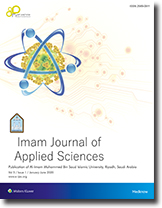Morphological Traits Evaluation of Rumex L. (Polygonaceae Juss.: Rumicoideae Leurss.) Using Principal Component Analysis
Keywords:
Morphological correlation, PAST, PCA, PhenogramAbstract
The purpose of the present work is to use Principal Component Analysis (PCA) and phenetic clustering to examine and understand the patterns of morphological variation among taxa within the genus Rumex subfamily Rumicoideae (Polygonaceae). Morphological variation was assessed in ten Rumex taxa using Principal Component Analysis (PCA). Fourteen morphological features, which include 29 character states were examined. According to PCA, the first two factors explained 53.6% of the total variance, with inflorescence type making the most contribution. R. pictus was the most divergent, but R. pulcher, R. vesicarius, R. roseus, and R. simpliciflorus were closely related, according to UPGMA clustering. Both positive and negative relationships between attributes were found using correlation analysis. The findings support the use of morphological features in improving classifications within Rumicoideae and demonstrate their taxonomic significance.




